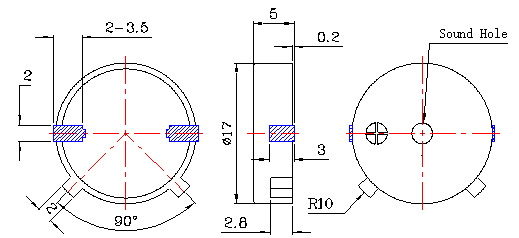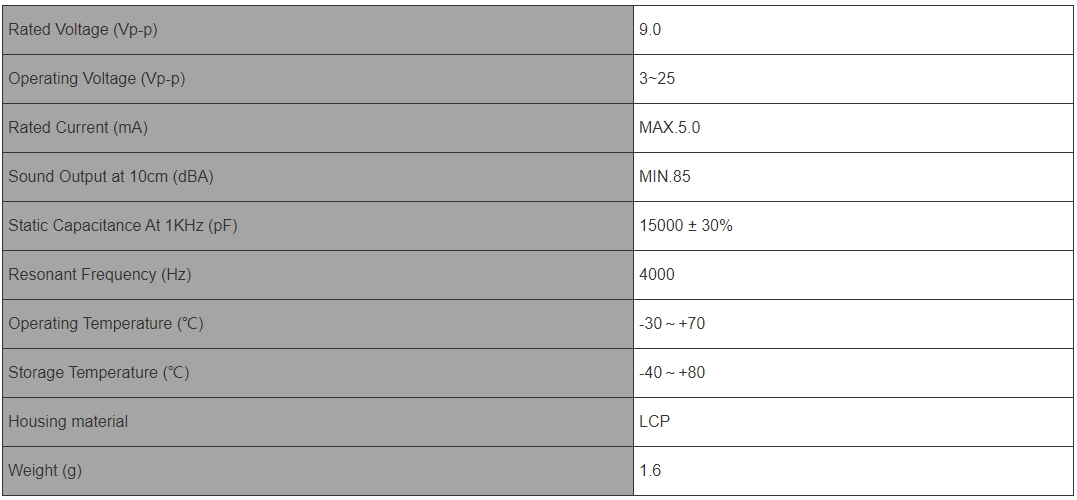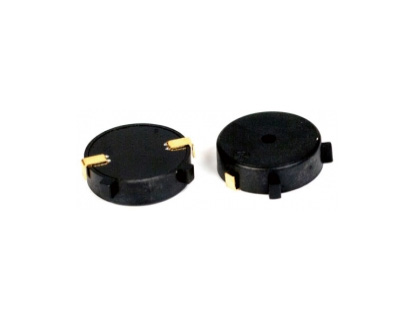Does a 9v piezo buzzer need a resistor?
 Aug 13, 2024|
Aug 13, 2024| View:57
View:57Understanding Piezo Buzzers: A piezo buzzer is an electronic sound-producing device that uses the piezoelectric effect to generate sound. When a voltage is applied, the piezoelectric material vibrates, creating sound waves.
Resistor Function: The primary function of a resistor in a 9v piezo buzzer circuit is to limit the current flow. Without a resistor, the current could be too high, leading to potential damage to the buzzer or shortening its lifespan.
Circuit Voltage: If the supply voltage of the circuit is higher than the rated voltage of the piezo buzzer, a resistor is necessary to drop the voltage to the appropriate level.
Buzzer Specifications: Check the datasheet or specifications of the piezo buzzer to determine the recommended operating voltage and current. This information is crucial for selecting the correct resistor value.

Ohm's Law: The relationship between voltage, current, and resistance is governed by Ohm's Law, which states that , where is the voltage, is the current, and is the resistance. This law is used to calculate the necessary resistance value.
Calculating Resistance: To calculate the resistance needed, you can rearrange Ohm's Law to . If the buzzer's datasheet specifies a maximum current, you can use the supply voltage and the maximum current to find the required resistance.
Power Dissipation: The resistor must be able to dissipate the power that it will handle without overheating. The power dissipation can be calculated using the formula . Ensure the resistor's power rating is higher than the calculated power.
Resistor Tolerance: Resistors have a tolerance value that indicates the possible variation in resistance. Choose a resistor with a tolerance that ensures the actual resistance is within the acceptable range for the application.
Resistor Type: There are various types of resistors, including through-hole and surface-mount devices. Choose a type that is compatible with your circuit design and fabrication process.
Circuit Design: The placement of the resistor in the circuit is also important. It should be placed in series with the 9v piezo buzzer to effectively limit the current.
Testing and Adjustment: After selecting and installing the resistor, it's important to test the circuit to ensure that the buzzer operates correctly and that the current is within the specified limits.

Environmental Factors: The operating environment can affect the performance of the resistor and the buzzer. Factors such as temperature and humidity can influence the resistance value and the power dissipation capacity of the resistor.
Safety Considerations: When working with electronics, it's important to follow safety guidelines to prevent electric shock or damage to components.
Alternative Current Limiting: In some cases, other current-limiting methods, such as using a transistor or a current-limiting diode, 9V piezo buzzer may be used in place of a resistor.
Troubleshooting: If the buzzer does not operate as expected, check the resistor value, connections, and power supply to ensure everything is correct.
Regulatory Compliance: Ensure that the use of resistors and the overall design of the circuit comply with any relevant electrical and safety standards.
Educational Value: Understanding the need for and calculation of resistors in circuits is an important aspect of electronics education, helping to build a foundation in circuit design and component selection.






